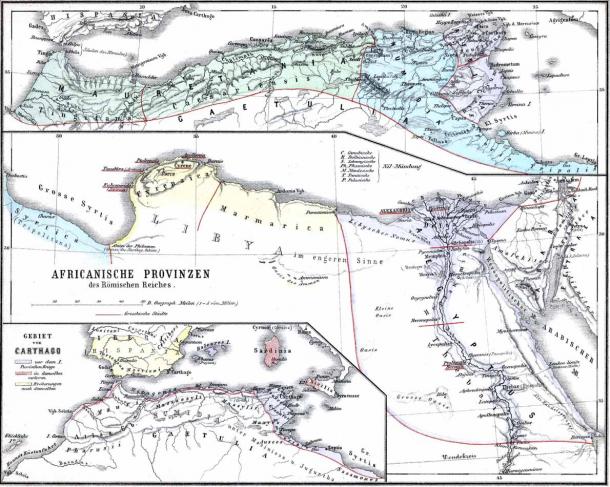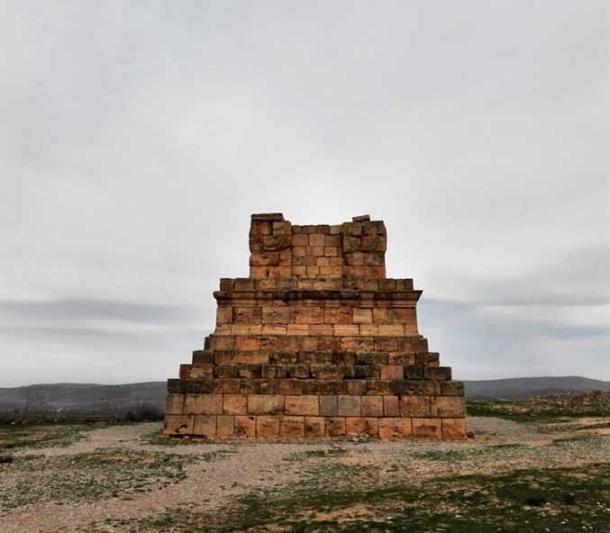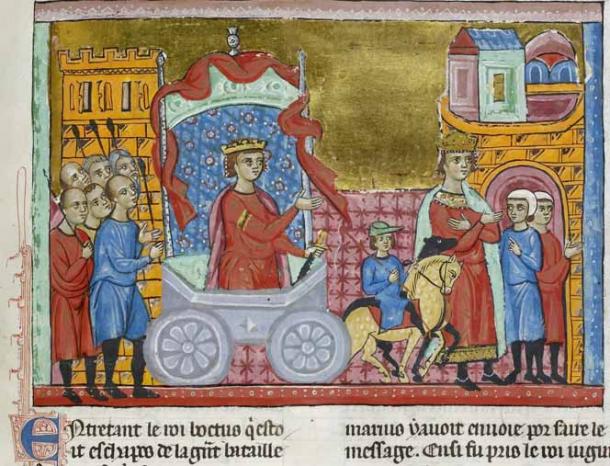The ancient Romans placed a lot of the world under their heel and into their sphere of influence. Numerous cultures, nations, and civilizations fell in their wake. Centuries of blossoming was terminated and these cultures were ushered into a new era. One such civilization was ancient Numidia. An old and powerful kingdom, Numidia was well known to the Greeks and the Romans, and their clash was inevitable.
Today we will learn all the crucial details, as well as all the major wars and events that characterized this powerful, but somewhat short-lived, kingdom situated in northern Africa. Who were the inhabitants of Numidia? And why was this kingdom such a lucrative objective for the Romans that they had to conquer it? Let’s find out more about one of the most important periods of Berber history and of North Africa too!
Who Are the Berbers and How Did Numidia Emerge?
The Berbers are an old and very diverse ethnic group, native to North Africa and parts of West Africa too. Today, they number well over 50 million people, and can be found in Libya, Algeria, Morocco, Mauritania, Tunisia, and elsewhere. The term “Berber” is an exonym – it comes from the ancient Greek term barbaros, meaning “barbarian”. However, the Berbers call themselves Imazighen.
Historically, the Berber tribes and peoples played an important role, especially in connection to their seaside ports on the coasts of North Africa, in modern day Libya and Algeria. Being so numerous and so widespread, the Berbers were never a singular ethnicity, but rather an ethnic group of numerous tribes that shared the same identity and origins. This fact is important when we consider the history of ancient Numidia.

The ancient Romans quashed the Kingdom of Numidia, by reducing it over time to a shadow of its former greatness. The image shows the Numidian cavalry on Trajan’s Column in Rome. Source: JJ’s Wargames
The Numidians were one such tribal union of Berber origin, the inhabitants of Numidia, and a very important player on the ancient stage of history. The Numidians were amongst the earliest Berber tribes to come into contact with the powerful Carthage, the famous city-state of the Phoenicians. When the Numidians began trading with Carthage, the former reaped the fruits of their friendly relationship as the latter grew in power. Soon, Carthage was also militarily involved with the Numidians, often relying on their highly skilled cavalry in their wars with the Romans.
Titus Livius, the famed Roman historian, described the Numidian cavalry as “by far the best horsemen in Africa.” They were famously used by Hannibal in the Second Punic War . However, Numidians didn’t fight exclusively for the Carthaginians. The Romans also relied on their skill. In a classic mercenary fashion, the Berbers were long used by the Romans as a fast, light, and deadly cavalry unit.

Map showing the African provinces of the Roman Empire, including Numidia. ( Public domain )
In the Shadow of Greater Kingdoms
But Numidians were not content to always dwell in the shadow of Carthage. Their independence soon became prominent, and a strong, prosperous kingdom was about to emerge. Polybius, the crucial ancient Greek historian, was amongst the first to write about Numidia.
Around 200 BC, he mentions them as the peoples who live to the west of Carthage, in a territory that roughly corresponds to modern day Algeria. The name Numidians allegedly stems from the ancient Greek word for “nomads” (Νομάδες). The Latin interpretation of this word became “Numidae,” from which emerged the exonym we know today: Numidia.
To understand the history of Numidia, it is crucial to know here that the kingdom of Numidia was not always unified, and that this tribal Berber federation did not always coexist in peace. Before their unification, the Numidians were split into two rival tribes: in the west of their territory were the Masaesyli, and in the east were the Massylii. It is with these two tribes that the complex story of the birth of the Kingdom of Numidia begins. It is a story that is marked by differing political allegiances. In the end, the fate of this small nation was decided by the large powers of the Romans and the Carthaginians.
The Second Punic War was fought between 218 and 201 BC, and was the second of the three major conflicts between Carthage and Rome. Collectively, the Punic Wars were a defining part of their struggle to dominate the Mediterranean, and in this struggle they swept up all the minor players.
Gaia was the Berber King of the Massylii. During the Second Punic War , his political allegiance lay with Carthage. However, the allegiance of Syphax, the King of the Masaesyli, lay with Rome. This pitted the two Numidian tribes against one another, as the major powers basically used them for their own benefit. But it was the rise of one powerful, exceptional man that would turn the fate of these warring tribes around, and bring about the much needed change of course in the history of Numidia. His name was Masinissa.

Masensen, or Masinissa, was a shrewd hero who switched to side with the Romans and was therefore able to share in the spoils after the Second Punic War, thus establishing the united and powerful Kingdom of Numidia. (Numidix / CC BY-SA 3.0 )
Masensen: Shrewd Leader and Hero of the Berbers
Also known as Masensen, Masinissa was the son of King Gaia of the Massylii. Born roughly around the year 238 BC, Masinissa was brought up in Carthage, with whom his father was allied. Raised as a noble, he soon became a prominent general, a charismatic leader, and a rising and powerful player in the politics of the time. The Greek historian Polybius met him and later wrote that he was “the best man of all the kings of our time”.
When Gaia died and Masinissa became the new King of the Massylii, an important change occurred. Masinissa switched his allegiance from Carthage to Rome. The Romans were shrewd in their politics and alliances. King Syphax of the Masaesyli promptly abandoned Rome and defected to Carthage in opposition to his rival. But it was exactly this move that shows us how powerful of a leader Masinissa truly was: he chose the winning side. The Romans emerged as victors from the Second Punic War, and that meant that Masinissa and his Massylii were to share in the spoils of war. The Masaesyli and their King Syphax were defeated by Masinissa, and the two tribes were united into a single, powerful Kingdom – Numidia.
Masinissa thus became one of the most important figures in the history of the Numidians and Berbers as a whole. His new Kingdom was large and very powerful. It stretched to almost entirely surround Carthage, from Cyrenaica to the south, Mauritania in the West, and all along the coast of the Mediterranean Sea. This vast territory corresponds to parts of modern-day Algeria and Tunisia.
Masinissa was a powerful man and an equally powerful ruler. He died when he was roughly 90 years old, having ruled Numidia for some 54 years. He is also known to have fathered 44 sons! Although at first he was one of the biggest thorns in the side of Rome, he later became one of their staunchest allies, remaining so until his death. His loyalty was unconditional after he defected to Rome’s side. Masinissa brought important reforms into the Numidian Kingdom, especially in relation to agriculture. In the centuries following his rule, Numidia became the bread basket of Rome.
But, as history so often has taught us, when a powerful and long-lived King dies, his heirs can seldom reach the same level of success with ease. Masinissa was followed by his eldest legitimate son, King Micipsa. He began his rule in 148 BC when his father died, and was a skilled ruler. He fathered two legitimate sons, Adherbal and Hiempsal, but also added to his own royal household the illegitimate grandson of late Masinissa, his nephew Jugurtha.
Before his death, Micipsa left the Kingdom of Numidia to be ruled jointly by the three of them. However, the desire for power quickly took over. Conflict emerged almost immediately, and Jugurtha – so loved by the people of Numidia – reverted to bribery and executed
ion, and eventually had Hiempsal killed. This placed him into open war with Adherbal. The latter however had the aid of Rome on his side, and this fact complicated things all too much.

Tomb of the Masensen, or Masinissa, the King of a united Numidia, located near Cirta, the modern-day Constantine in Algeria, and one the capital of Numidia. (Riad Hadjsadok / CC BY-SA 4.0 )
The Disastrous Jugurthine War and Numidia’s Downfall
When several prominent Romans died as the result of Jugurtha’s conflict with Adherbal, Rome decided to step in. This led to the brief but crucial Jugurthine War that lasted from 112 to 106 BC. It was one of the critical moments in the history of Numidia. For the Romans, it was as a fundamental stepping stone towards the subjugation of North Africa , and another way for them to solidify their power.
The Roman war against Numidia and Jugurtha dragged on into an indecisive campaign, but the situation turned thanks to the leadership of Gaius Marius, the consul and general who was famous for his Marian reforms. The war ended with the capture of Jugurtha, who was delivered to Rome in chains and paraded in the Roman triumph of Gaius Marius. Jugurtha was imprisoned and there was either executed or starved to death in 104 BC.
After this disastrous war with the Romans, the Kingdom of Numidia entered into a slow and gradual decline. Bocchus I, the Berber King of Mauretania – another important power that neighbored Numidia – prospered greatly after Jugurtha’s defeat, mainly because he aided the Romans. The far west of Numidia was thus given to Bocchus and became a part of Mauretania. Jugurtha was succeeded by his half-brother and another grandson of the great Masinissa – King Gauda. He was most likely a vassal of the Romans, and ruled a partitioned Numidia. Gauda died around 88 BC. After his death Numidia split into a large eastern kingdom and a smaller western kingdom.
Nevertheless, soon after King Gauda’s death, the great Kingdom of Numidia finally met its demise. Caesar’s Civil War against Pompey was the deciding factor in Numidia’s downfall in 46 BC. The aforementioned smaller western kingdom was also taken by the Mauritanians, while the large eastern kingdom became a province of Rome, losing its independence for good. For the Romans, it became the province of Numidia, often called Africa Nova .
Emperor Augustus later united these areas with Tripolitania, and created in 40 BC the province of Africa Proconsularis. From its fall in 46 BC, Numidia emerged in a new format – as a province. It became increasingly Romanized, with new towns emerging, an increasing presence of Roman military, and numerous different designations being created over the years. Nevertheless, the name of Numidia held on for a long time afterwards.
The territories that once belonged to Numidia were now a great boon to the Roman Empire, becoming a key strategic position for their supremacy in the Mediterranean. The key Numidian ports of Skikda and Bona, and towns such as Cirta and Lambessa enjoyed great prominence and are now studded with Roman remains. Lambessa itself was a town founded by the Romans to house the Legio III Augusta, and was raised sometimes during the time of Emperor Hadrian around 120 AD. By that time the Kingdom of Numidia was but an old and venerated memory.

King Jugurtha being paraded through Rome as a prisoner as part of the Roman triumph of Gaius Marius. ( Public domain )
A Fate Every Kingdom Suffers
Alas, such is the fate of every great kingdom. From rival factions or unification, to being swept up by major powers, eventually most great kingdoms are reduced to a shadow of your previous greatness. The story of Numidia is the classic scenario of antiquity and the period of Roman dominance. When the wealthy and powerful Carthage fell to the Romans, it became clear that Numidia’s days were numbered.
One must wonder just how much the power-hungry and reckless King Jugurtha contributed to the downfall of the great kingdom that his grandfather Masinissa helped raise to lofty heights. Today only one solitary and grandiose stone tomb stands close to the ancient capital of Numidia, Cirta. It is believed to house the remains of the great King Masinissa and is a mute testament to a long-lost era. But it also stands to remind us that history is a ruthless master: the ever-turning wheel of time is incessant in its progress. As it spins, death follows in its wake, and memory is close at heel. Great kingdoms, empires, heroes and generals, ordinary men and all their dreams, loves, and hopes are bound to be lost and forgotten, being relegated to the pages of history.
Top image: The history of the Berbers and the Kingdom of Numidia is complex. During the Battle of Zama, depicted here, the Numidian cavalry acted as mercenaries helping the Romans secure a foothold in the region. Source: Public domain
By Aleksa Vučković
Related posts:
Views: 0
 RSS Feed
RSS Feed















 January 20th, 2021
January 20th, 2021  Awake Goy
Awake Goy  Posted in
Posted in  Tags:
Tags: 
















